BAphoto CELEBRATES A TRIBUTE IN LIFE TO LUCRECIA PLAT AND HOSTS A FANTASTIC ENCOUNTER
In this long-awaited edition, the outstanding photographer in Artista Homenaje is Lucrecia Plat from Argentina. Curated by Francisco Medail, the exhibition covers a large part of Plat's production in her forty years of work, among which the series of intimate portraits of Alejandra Pizarnik and the nocturnal records of the Buenos Aires elite stand out.
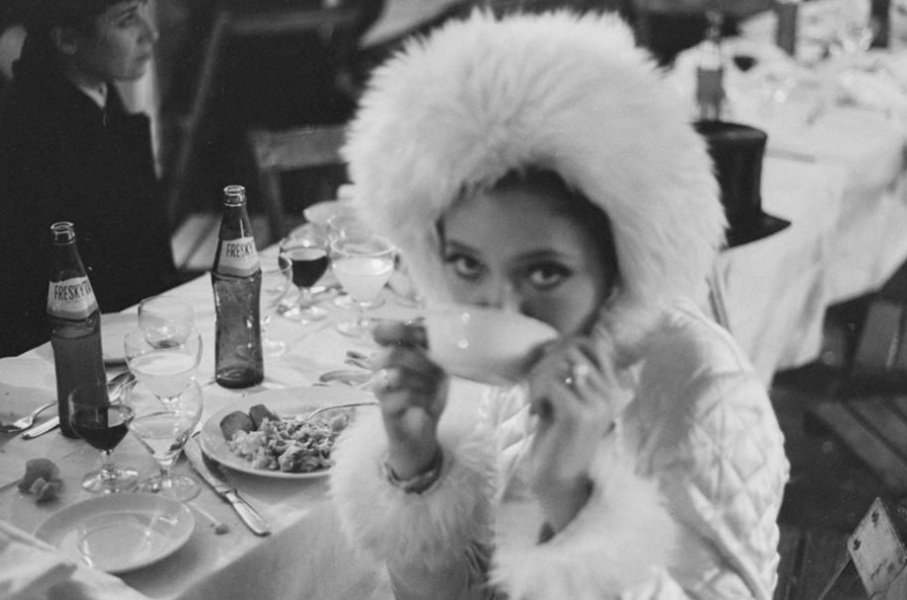
The tribute program within BAphoto was implemented in a sustained manner as of 2015. Curated by Francisco Medail, former artistic director of the fair and current curator of the Kirchner Cultural Center, this program aims to recover and value the figures within the photographic discipline whose production impacted local history. Since then, tributes have been made to Jorge Friedman, Juan Di Sandro, Frans van Riel, Pepe Fernández, Pedro Otero and Foto Estudio Luisita.
"It is a pleasure for us to pay tribute to a living artist", highlights Diego Costa Peuser, Director of BAphoto. "It is an opportunity to underline the important task of photographers who actively contribute to the Argentine visual identity."
THE WORKS AND THE NIGHTS
By Francisco Medail. Curator
1969. It's two in the morning and the phone rings. Lucrecia Plat answers. On the other side, a stumbling voice offers her a proposal: let's make a book about dolls together, I write the poems and you take the photos. The one speaking is Alejandra Pizarnik, whom Lucrecia had met years ago in a photo session for the Centro Editor de América Latina. That afternoon, Alejandra had been outgoing and fun, an attitude not very common for the poet. Much later, Lucrecia learned from a mutual friend that Alejandra was in a frank plan to seduce her.
The offer to make a photobook together came to nothing. Plat promised to call her, but was too busy with her recent motherhood to focus on unprofitable projects (little did she know that twentieth-century photo books among writers and photographers would be relics in today's art market). Lucrecia Plat is, above all, hard-working; her approach to photography was primarily to earn a living. She had been a municipal employee but her partner at the time motivated her to change the office for the camera. Her father refused to let her be a photographer, a job frowned upon by the aspirational middle classes of those years. "Don't worry, no one is going to know that I'm your daughter," she replied, and changed her last name.
-
Lucrecia Plat, Sin título [Nelly Arrieta de Blaquier en una cena del Mozarteum Argentino, Hotel Libertador], Fotografía, 1979 [2018]
-
Lucrecia Plat, Sin título [Nelly Arrieta de Blaquier en una cena del Mozarteum Argentino, Hotel Libertador], Fotografía, 1979 [2018]
-
Lucrecia Plat, Delfina Frers y Marcelo Bravo en desfile Gino Bogani, 1979 [2018]
-
Lucrecia Plat, Sin título [Cocktail Regine], Fotografía, 1978 [2018]
Lucrecia did everything. Weddings, publicity assignments, journalistic records for international media. She dreamed of having a stable salary so she tried entering the manly world of illustrated magazines. She had been with her camera at the Ezeiza Massacre but it was insufficient. As a woman, there was no experience or courage worth. For the Latin American Publishing Center, Boris Spivacow gave her a single assignment: that the portraits of writers be unconventional. This explains, for example, the photo of Roberto Juarroz standing on the ledge of the Faculty of Philosophy and Letters, in its old headquarters on Calle Independencia. At the end of the 70s, she was hired by the newspaper La Nación to cover social events, where she photographed the night parties of the Argentine oligarchy, which between cocktails and cigarettes celebrated the new economic direction of the country. Lucrecia didn't wait for people to pose, she fired the shutter and kept going. Mind you, she was careful. Being a photographer during the military dictatorship was a risk.
Time after, she opened her own advertising studio, although she quickly got bored. Technical perfectionism and creativity did not go hand in hand with her. With the plate camera that she bought at that time, she made the Women's Wallets series, her main approach to conceptual photography. After closing the studio, many assignments followed. She never stopped taking photos.
Lucrecia was always aware of the testimonial value that her images would have; They record important people and moments in our history. Today she looks at them and double-checks, never imagining she would be payed tribute at an art fair.
-
Lucrecia Plat, Sin título I, de la serie Carteras de mujeres, Fotografía, 1994
-
Lucrecia Plat, Sin título I, de la serie Carteras de mujeres, Fotografía, 1994
-
Lucrecia Plat, Olga Orozco, 1980
-
Lucrecia Plat, Rogelio Polesello [en Campaña Freskyta], Fotografía, 1967
-
Lucrecia Plat, Alejandra Pizarnik, Fotografía, 1967 [1990]
As part of the tribute, and in celebration of the long-awaited in-person meeting, BAphoto organizes a conversation with Lucrecia Plat. With the participation of Clara Nerone and Bruno Dubner, and moderated by Francisco Medail, curator of the section, the conversation "The works and the nights" will take place on Friday, October 15 at 6:30 pm at BAphoto. (Casa Basavilbaso, Basavilbaso 1233, CABA)
Francisco Medail (b. Entre Ríos, 1991) is an artist and cultural manager. He has obtained scholarships, awards and grants from different institutions, such as the National Fund for the Arts (2016) and the Metropolitan Fund for Culture, Arts and Sciences (2016, 2018). He did residencies at the Cité Internationale des Arts (Paris, 2018) and Fonte (Sao Paulo, 2018).
Among his solo exhibitions, Extimidad (2013), Parte (2015) and Photographs 1930-1943 (2017) stand out. His work is part of public and private collections, including the National Museum of Fine Arts, the Emilio Caraffa Provincial Museum and the Getty Research Institute. Between 2015 and 2020, he was artistic director of the BAphoto fair. He currently directs the collection of theoretical books on photography Imperfect Preterites and is curator of the Archives Area of the Kirchner Cultural Center.
-
Francisco Medail
-
Francisco Medail
Related Topics
May interest you
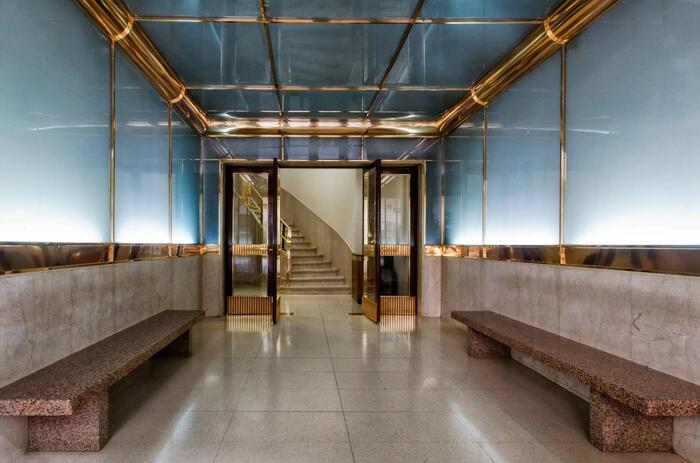
For the first time in its history, the longest running Latin American photography fair that can be visited from October 13 to 17, combines its classic in-person edition with a special online program where national and international art coexist. Located at Casa Basavilbaso, the long-awaited reunion will be complemented by an online program that includes Live Talks, Open Files and guided tours.
BAphoto IN-PERSON AND VIRTUAL, VINTAGE AND CONTEMPORARY
For the first time in its history, the longest running Latin American photography fair that can be visited from October 13 to 17, combines its classic in-person edition with a special online program where national and international art coexist. Located at Casa Basavilbaso, the long-awaited reunion will be complemented by an online program that includes Live Talks, Open Files and guided tours.

For the first time in its history, the longest running Latin American photography fair that can be visited from October 13 to 17, combines its classic in-person edition with a special online program where national and international art coexist. Located at Casa Basavilbaso, the long-awaited reunion will be complemented by an online program that includes Live Talks, Open Files and guided tours.
BAphoto IN-PERSON AND VIRTUAL, VINTAGE AND CONTEMPORARY
For the first time in its history, the longest running Latin American photography fair that can be visited from October 13 to 17, combines its classic in-person edition with a special online program where national and international art coexist. Located at Casa Basavilbaso, the long-awaited reunion will be complemented by an online program that includes Live Talks, Open Files and guided tours.
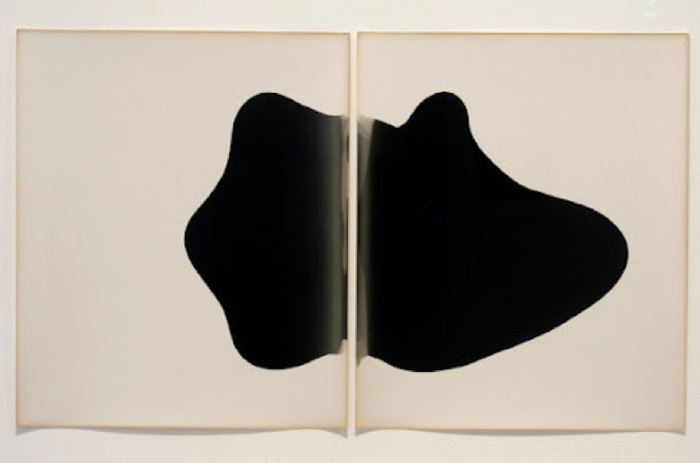
In the weeks leading up to the fair and as part of the Media Point 2021 space, an Education Cycle in Contemporary Photography will be scheduled that will consist of three masterclasses led by renowned professionals in the photographic field. With the support of Zurich, BAphoto invites the public to approach photography from different perspectives. Each segment lasts 1 hour and a half, and is accesible via Zoom with prior registration.
BAphoto INAUGURATES MEDIA POINT 2021 WITH THE MASTERCLASS CYCLE
In the weeks leading up to the fair and as part of the Media Point 2021 space, an Education Cycle in Contemporary Photography will be scheduled that will consist of three masterclasses led by renowned professionals in the photographic field. With the support of Zurich, BAphoto invites the public to approach photography from different perspectives. Each segment lasts 1 hour and a half, and is accesible via Zoom with prior registration.
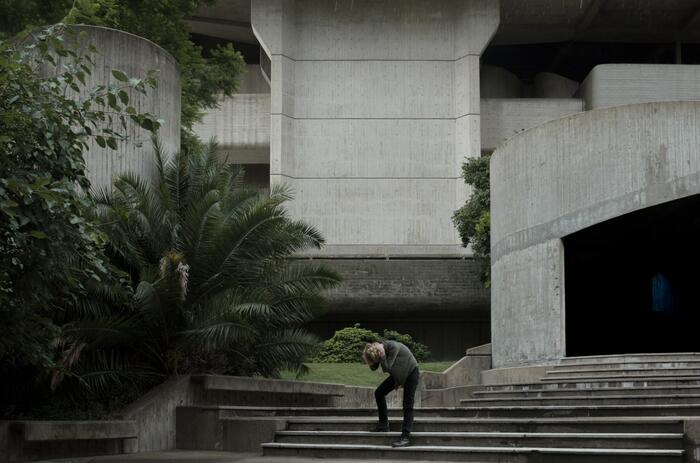
Since 2015, Fuera de Foco (Out of Focus) is a solo projects section destined to the exploration of the different procedures, languages and materialities that the photographic medium makes possible. With the aim of providing visibility to new generations of artists, Fuera de Foco invites three Argentine galleries to present an individual proposal, of an installation and experimental nature, promoting a territory open to dialogue with other disciplines that can enrich and generate new experiences aesthetic.
LOCUS AND LANGUAGE OF BAphoto 2021 - ‘FUERA DE FOCO’ SECTION
Since 2015, Fuera de Foco (Out of Focus) is a solo projects section destined to the exploration of the different procedures, languages and materialities that the photographic medium makes possible. With the aim of providing visibility to new generations of artists, Fuera de Foco invites three Argentine galleries to present an individual proposal, of an installation and experimental nature, promoting a territory open to dialogue with other disciplines that can enrich and generate new experiences aesthetic.

Zurich, the No. 1 insurance company in Argentina, accompanied BAphoto with 2 special proposals for its 2021 edition, held between October 13 and 17 at Casa Basavilbaso in-person and with a virtual program.
ZURICH JOINS BAphoto AGAIN, BRINGING THE ART OF PHOTOGRAPHY CLOSER TO THE GENERAL PUBLIC
Zurich, the No. 1 insurance company in Argentina, accompanied BAphoto with 2 special proposals for its 2021 edition, held between October 13 and 17 at Casa Basavilbaso in-person and with a virtual program.
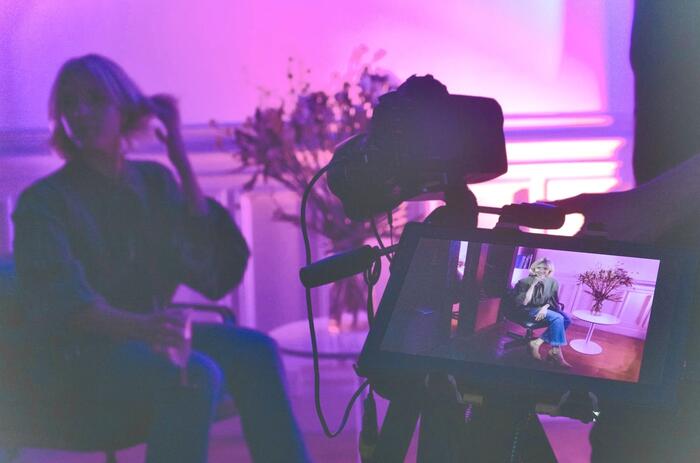
BAphoto premiered the in-person season in Buenos Aires with its seventeenth edition and celebrated with a fantastic meeting. Artists, gallery owners, curators, collectors and photography lovers came together to exhibit and enjoy the best of photography. The fair featured the outstanding work of curators Francisco Medail, Bárbara Golubicki, Irene Gelfman, Florencia Battiti, Rodrigo Alonso, Verónica Santalla and Celina Marco.
END OF BAphoto 2021 - THE HIGHLY AWAITED RETURN
BAphoto premiered the in-person season in Buenos Aires with its seventeenth edition and celebrated with a fantastic meeting. Artists, gallery owners, curators, collectors and photography lovers came together to exhibit and enjoy the best of photography. The fair featured the outstanding work of curators Francisco Medail, Bárbara Golubicki, Irene Gelfman, Florencia Battiti, Rodrigo Alonso, Verónica Santalla and Celina Marco.

Gallery is the artistic circuit in Buenos Aires with the longest trajectory and with the greatest coverage, including the neighborhoods of La Boca (District of the Arts), Recoleta, Retiro, Palermo and Villa Crespo. Developed by Arte al Día, the Gallery circuit has been promoting its commitment to the local art scene for more than forty years.
BUENOS AIRES GALLERY, THE IDEAL PLAN FOR THIS SATURDAY
Gallery is the artistic circuit in Buenos Aires with the longest trajectory and with the greatest coverage, including the neighborhoods of La Boca (District of the Arts), Recoleta, Retiro, Palermo and Villa Crespo. Developed by Arte al Día, the Gallery circuit has been promoting its commitment to the local art scene for more than forty years.
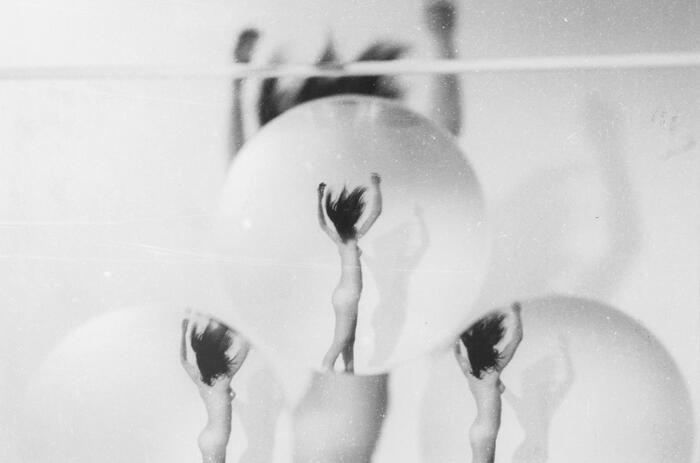
In the interest of paying tribute to one of the photographers who contributed in building Argentina's visual identity, Francisco Medail dedicated the Artista Homenaje section in BAphoto to Lucrecia Plat. Working with an extensive archive of portraits, conceptual photographs and the collaboration of Clara Nerone, Medail highlights the important role of archives in the conception and appreciation of contemporary art.
THE MEANING OF TRIBUTE IN LIFE: LUCRECIA PLAT AT BAphoto 2021
In the interest of paying tribute to one of the photographers who contributed in building Argentina's visual identity, Francisco Medail dedicated the Artista Homenaje section in BAphoto to Lucrecia Plat. Working with an extensive archive of portraits, conceptual photographs and the collaboration of Clara Nerone, Medail highlights the important role of archives in the conception and appreciation of contemporary art.

For the first time in its history, the longest running Latin American photography fair that can be visited from October 13 to 17, combines its classic in-person edition with a special online program where national and international art coexist. Located at Casa Basavilbaso, the long-awaited reunion will be complemented by an online program that includes Live Talks, Open Files and guided tours.
BAphoto IN-PERSON AND VIRTUAL, VINTAGE AND CONTEMPORARY
For the first time in its history, the longest running Latin American photography fair that can be visited from October 13 to 17, combines its classic in-person edition with a special online program where national and international art coexist. Located at Casa Basavilbaso, the long-awaited reunion will be complemented by an online program that includes Live Talks, Open Files and guided tours.

In the weeks leading up to the fair and as part of the Media Point 2021 space, an Education Cycle in Contemporary Photography will be scheduled that will consist of three masterclasses led by renowned professionals in the photographic field. With the support of Zurich, BAphoto invites the public to approach photography from different perspectives. Each segment lasts 1 hour and a half, and is accesible via Zoom with prior registration.
BAphoto INAUGURATES MEDIA POINT 2021 WITH THE MASTERCLASS CYCLE
In the weeks leading up to the fair and as part of the Media Point 2021 space, an Education Cycle in Contemporary Photography will be scheduled that will consist of three masterclasses led by renowned professionals in the photographic field. With the support of Zurich, BAphoto invites the public to approach photography from different perspectives. Each segment lasts 1 hour and a half, and is accesible via Zoom with prior registration.

Since 2015, Fuera de Foco (Out of Focus) is a solo projects section destined to the exploration of the different procedures, languages and materialities that the photographic medium makes possible. With the aim of providing visibility to new generations of artists, Fuera de Foco invites three Argentine galleries to present an individual proposal, of an installation and experimental nature, promoting a territory open to dialogue with other disciplines that can enrich and generate new experiences aesthetic.
LOCUS AND LANGUAGE OF BAphoto 2021 - ‘FUERA DE FOCO’ SECTION
Since 2015, Fuera de Foco (Out of Focus) is a solo projects section destined to the exploration of the different procedures, languages and materialities that the photographic medium makes possible. With the aim of providing visibility to new generations of artists, Fuera de Foco invites three Argentine galleries to present an individual proposal, of an installation and experimental nature, promoting a territory open to dialogue with other disciplines that can enrich and generate new experiences aesthetic.

Zurich, the No. 1 insurance company in Argentina, accompanied BAphoto with 2 special proposals for its 2021 edition, held between October 13 and 17 at Casa Basavilbaso in-person and with a virtual program.
ZURICH JOINS BAphoto AGAIN, BRINGING THE ART OF PHOTOGRAPHY CLOSER TO THE GENERAL PUBLIC
Zurich, the No. 1 insurance company in Argentina, accompanied BAphoto with 2 special proposals for its 2021 edition, held between October 13 and 17 at Casa Basavilbaso in-person and with a virtual program.

BAphoto premiered the in-person season in Buenos Aires with its seventeenth edition and celebrated with a fantastic meeting. Artists, gallery owners, curators, collectors and photography lovers came together to exhibit and enjoy the best of photography. The fair featured the outstanding work of curators Francisco Medail, Bárbara Golubicki, Irene Gelfman, Florencia Battiti, Rodrigo Alonso, Verónica Santalla and Celina Marco.
END OF BAphoto 2021 - THE HIGHLY AWAITED RETURN
BAphoto premiered the in-person season in Buenos Aires with its seventeenth edition and celebrated with a fantastic meeting. Artists, gallery owners, curators, collectors and photography lovers came together to exhibit and enjoy the best of photography. The fair featured the outstanding work of curators Francisco Medail, Bárbara Golubicki, Irene Gelfman, Florencia Battiti, Rodrigo Alonso, Verónica Santalla and Celina Marco.

Gallery is the artistic circuit in Buenos Aires with the longest trajectory and with the greatest coverage, including the neighborhoods of La Boca (District of the Arts), Recoleta, Retiro, Palermo and Villa Crespo. Developed by Arte al Día, the Gallery circuit has been promoting its commitment to the local art scene for more than forty years.
BUENOS AIRES GALLERY, THE IDEAL PLAN FOR THIS SATURDAY
Gallery is the artistic circuit in Buenos Aires with the longest trajectory and with the greatest coverage, including the neighborhoods of La Boca (District of the Arts), Recoleta, Retiro, Palermo and Villa Crespo. Developed by Arte al Día, the Gallery circuit has been promoting its commitment to the local art scene for more than forty years.

In the interest of paying tribute to one of the photographers who contributed in building Argentina's visual identity, Francisco Medail dedicated the Artista Homenaje section in BAphoto to Lucrecia Plat. Working with an extensive archive of portraits, conceptual photographs and the collaboration of Clara Nerone, Medail highlights the important role of archives in the conception and appreciation of contemporary art.
THE MEANING OF TRIBUTE IN LIFE: LUCRECIA PLAT AT BAphoto 2021
In the interest of paying tribute to one of the photographers who contributed in building Argentina's visual identity, Francisco Medail dedicated the Artista Homenaje section in BAphoto to Lucrecia Plat. Working with an extensive archive of portraits, conceptual photographs and the collaboration of Clara Nerone, Medail highlights the important role of archives in the conception and appreciation of contemporary art.

For the first time in its history, the longest running Latin American photography fair that can be visited from October 13 to 17, combines its classic in-person edition with a special online program where national and international art coexist. Located at Casa Basavilbaso, the long-awaited reunion will be complemented by an online program that includes Live Talks, Open Files and guided tours.
BAphoto IN-PERSON AND VIRTUAL, VINTAGE AND CONTEMPORARY
For the first time in its history, the longest running Latin American photography fair that can be visited from October 13 to 17, combines its classic in-person edition with a special online program where national and international art coexist. Located at Casa Basavilbaso, the long-awaited reunion will be complemented by an online program that includes Live Talks, Open Files and guided tours.

In the weeks leading up to the fair and as part of the Media Point 2021 space, an Education Cycle in Contemporary Photography will be scheduled that will consist of three masterclasses led by renowned professionals in the photographic field. With the support of Zurich, BAphoto invites the public to approach photography from different perspectives. Each segment lasts 1 hour and a half, and is accesible via Zoom with prior registration.
BAphoto INAUGURATES MEDIA POINT 2021 WITH THE MASTERCLASS CYCLE
In the weeks leading up to the fair and as part of the Media Point 2021 space, an Education Cycle in Contemporary Photography will be scheduled that will consist of three masterclasses led by renowned professionals in the photographic field. With the support of Zurich, BAphoto invites the public to approach photography from different perspectives. Each segment lasts 1 hour and a half, and is accesible via Zoom with prior registration.

Since 2015, Fuera de Foco (Out of Focus) is a solo projects section destined to the exploration of the different procedures, languages and materialities that the photographic medium makes possible. With the aim of providing visibility to new generations of artists, Fuera de Foco invites three Argentine galleries to present an individual proposal, of an installation and experimental nature, promoting a territory open to dialogue with other disciplines that can enrich and generate new experiences aesthetic.
LOCUS AND LANGUAGE OF BAphoto 2021 - ‘FUERA DE FOCO’ SECTION
Since 2015, Fuera de Foco (Out of Focus) is a solo projects section destined to the exploration of the different procedures, languages and materialities that the photographic medium makes possible. With the aim of providing visibility to new generations of artists, Fuera de Foco invites three Argentine galleries to present an individual proposal, of an installation and experimental nature, promoting a territory open to dialogue with other disciplines that can enrich and generate new experiences aesthetic.

Zurich, the No. 1 insurance company in Argentina, accompanied BAphoto with 2 special proposals for its 2021 edition, held between October 13 and 17 at Casa Basavilbaso in-person and with a virtual program.
ZURICH JOINS BAphoto AGAIN, BRINGING THE ART OF PHOTOGRAPHY CLOSER TO THE GENERAL PUBLIC
Zurich, the No. 1 insurance company in Argentina, accompanied BAphoto with 2 special proposals for its 2021 edition, held between October 13 and 17 at Casa Basavilbaso in-person and with a virtual program.

BAphoto premiered the in-person season in Buenos Aires with its seventeenth edition and celebrated with a fantastic meeting. Artists, gallery owners, curators, collectors and photography lovers came together to exhibit and enjoy the best of photography. The fair featured the outstanding work of curators Francisco Medail, Bárbara Golubicki, Irene Gelfman, Florencia Battiti, Rodrigo Alonso, Verónica Santalla and Celina Marco.
END OF BAphoto 2021 - THE HIGHLY AWAITED RETURN
BAphoto premiered the in-person season in Buenos Aires with its seventeenth edition and celebrated with a fantastic meeting. Artists, gallery owners, curators, collectors and photography lovers came together to exhibit and enjoy the best of photography. The fair featured the outstanding work of curators Francisco Medail, Bárbara Golubicki, Irene Gelfman, Florencia Battiti, Rodrigo Alonso, Verónica Santalla and Celina Marco.

Gallery is the artistic circuit in Buenos Aires with the longest trajectory and with the greatest coverage, including the neighborhoods of La Boca (District of the Arts), Recoleta, Retiro, Palermo and Villa Crespo. Developed by Arte al Día, the Gallery circuit has been promoting its commitment to the local art scene for more than forty years.
BUENOS AIRES GALLERY, THE IDEAL PLAN FOR THIS SATURDAY
Gallery is the artistic circuit in Buenos Aires with the longest trajectory and with the greatest coverage, including the neighborhoods of La Boca (District of the Arts), Recoleta, Retiro, Palermo and Villa Crespo. Developed by Arte al Día, the Gallery circuit has been promoting its commitment to the local art scene for more than forty years.

In the interest of paying tribute to one of the photographers who contributed in building Argentina's visual identity, Francisco Medail dedicated the Artista Homenaje section in BAphoto to Lucrecia Plat. Working with an extensive archive of portraits, conceptual photographs and the collaboration of Clara Nerone, Medail highlights the important role of archives in the conception and appreciation of contemporary art.
THE MEANING OF TRIBUTE IN LIFE: LUCRECIA PLAT AT BAphoto 2021
In the interest of paying tribute to one of the photographers who contributed in building Argentina's visual identity, Francisco Medail dedicated the Artista Homenaje section in BAphoto to Lucrecia Plat. Working with an extensive archive of portraits, conceptual photographs and the collaboration of Clara Nerone, Medail highlights the important role of archives in the conception and appreciation of contemporary art.

For the first time in its history, the longest running Latin American photography fair that can be visited from October 13 to 17, combines its classic in-person edition with a special online program where national and international art coexist. Located at Casa Basavilbaso, the long-awaited reunion will be complemented by an online program that includes Live Talks, Open Files and guided tours.
BAphoto IN-PERSON AND VIRTUAL, VINTAGE AND CONTEMPORARY
For the first time in its history, the longest running Latin American photography fair that can be visited from October 13 to 17, combines its classic in-person edition with a special online program where national and international art coexist. Located at Casa Basavilbaso, the long-awaited reunion will be complemented by an online program that includes Live Talks, Open Files and guided tours.

In the weeks leading up to the fair and as part of the Media Point 2021 space, an Education Cycle in Contemporary Photography will be scheduled that will consist of three masterclasses led by renowned professionals in the photographic field. With the support of Zurich, BAphoto invites the public to approach photography from different perspectives. Each segment lasts 1 hour and a half, and is accesible via Zoom with prior registration.
BAphoto INAUGURATES MEDIA POINT 2021 WITH THE MASTERCLASS CYCLE
In the weeks leading up to the fair and as part of the Media Point 2021 space, an Education Cycle in Contemporary Photography will be scheduled that will consist of three masterclasses led by renowned professionals in the photographic field. With the support of Zurich, BAphoto invites the public to approach photography from different perspectives. Each segment lasts 1 hour and a half, and is accesible via Zoom with prior registration.

Since 2015, Fuera de Foco (Out of Focus) is a solo projects section destined to the exploration of the different procedures, languages and materialities that the photographic medium makes possible. With the aim of providing visibility to new generations of artists, Fuera de Foco invites three Argentine galleries to present an individual proposal, of an installation and experimental nature, promoting a territory open to dialogue with other disciplines that can enrich and generate new experiences aesthetic.
LOCUS AND LANGUAGE OF BAphoto 2021 - ‘FUERA DE FOCO’ SECTION
Since 2015, Fuera de Foco (Out of Focus) is a solo projects section destined to the exploration of the different procedures, languages and materialities that the photographic medium makes possible. With the aim of providing visibility to new generations of artists, Fuera de Foco invites three Argentine galleries to present an individual proposal, of an installation and experimental nature, promoting a territory open to dialogue with other disciplines that can enrich and generate new experiences aesthetic.

Zurich, the No. 1 insurance company in Argentina, accompanied BAphoto with 2 special proposals for its 2021 edition, held between October 13 and 17 at Casa Basavilbaso in-person and with a virtual program.
ZURICH JOINS BAphoto AGAIN, BRINGING THE ART OF PHOTOGRAPHY CLOSER TO THE GENERAL PUBLIC
Zurich, the No. 1 insurance company in Argentina, accompanied BAphoto with 2 special proposals for its 2021 edition, held between October 13 and 17 at Casa Basavilbaso in-person and with a virtual program.

BAphoto premiered the in-person season in Buenos Aires with its seventeenth edition and celebrated with a fantastic meeting. Artists, gallery owners, curators, collectors and photography lovers came together to exhibit and enjoy the best of photography. The fair featured the outstanding work of curators Francisco Medail, Bárbara Golubicki, Irene Gelfman, Florencia Battiti, Rodrigo Alonso, Verónica Santalla and Celina Marco.
END OF BAphoto 2021 - THE HIGHLY AWAITED RETURN
BAphoto premiered the in-person season in Buenos Aires with its seventeenth edition and celebrated with a fantastic meeting. Artists, gallery owners, curators, collectors and photography lovers came together to exhibit and enjoy the best of photography. The fair featured the outstanding work of curators Francisco Medail, Bárbara Golubicki, Irene Gelfman, Florencia Battiti, Rodrigo Alonso, Verónica Santalla and Celina Marco.

Gallery is the artistic circuit in Buenos Aires with the longest trajectory and with the greatest coverage, including the neighborhoods of La Boca (District of the Arts), Recoleta, Retiro, Palermo and Villa Crespo. Developed by Arte al Día, the Gallery circuit has been promoting its commitment to the local art scene for more than forty years.
BUENOS AIRES GALLERY, THE IDEAL PLAN FOR THIS SATURDAY
Gallery is the artistic circuit in Buenos Aires with the longest trajectory and with the greatest coverage, including the neighborhoods of La Boca (District of the Arts), Recoleta, Retiro, Palermo and Villa Crespo. Developed by Arte al Día, the Gallery circuit has been promoting its commitment to the local art scene for more than forty years.

In the interest of paying tribute to one of the photographers who contributed in building Argentina's visual identity, Francisco Medail dedicated the Artista Homenaje section in BAphoto to Lucrecia Plat. Working with an extensive archive of portraits, conceptual photographs and the collaboration of Clara Nerone, Medail highlights the important role of archives in the conception and appreciation of contemporary art.
THE MEANING OF TRIBUTE IN LIFE: LUCRECIA PLAT AT BAphoto 2021
In the interest of paying tribute to one of the photographers who contributed in building Argentina's visual identity, Francisco Medail dedicated the Artista Homenaje section in BAphoto to Lucrecia Plat. Working with an extensive archive of portraits, conceptual photographs and the collaboration of Clara Nerone, Medail highlights the important role of archives in the conception and appreciation of contemporary art.

For the first time in its history, the longest running Latin American photography fair that can be visited from October 13 to 17, combines its classic in-person edition with a special online program where national and international art coexist. Located at Casa Basavilbaso, the long-awaited reunion will be complemented by an online program that includes Live Talks, Open Files and guided tours.
BAphoto IN-PERSON AND VIRTUAL, VINTAGE AND CONTEMPORARY
For the first time in its history, the longest running Latin American photography fair that can be visited from October 13 to 17, combines its classic in-person edition with a special online program where national and international art coexist. Located at Casa Basavilbaso, the long-awaited reunion will be complemented by an online program that includes Live Talks, Open Files and guided tours.

In the weeks leading up to the fair and as part of the Media Point 2021 space, an Education Cycle in Contemporary Photography will be scheduled that will consist of three masterclasses led by renowned professionals in the photographic field. With the support of Zurich, BAphoto invites the public to approach photography from different perspectives. Each segment lasts 1 hour and a half, and is accesible via Zoom with prior registration.
BAphoto INAUGURATES MEDIA POINT 2021 WITH THE MASTERCLASS CYCLE
In the weeks leading up to the fair and as part of the Media Point 2021 space, an Education Cycle in Contemporary Photography will be scheduled that will consist of three masterclasses led by renowned professionals in the photographic field. With the support of Zurich, BAphoto invites the public to approach photography from different perspectives. Each segment lasts 1 hour and a half, and is accesible via Zoom with prior registration.

Since 2015, Fuera de Foco (Out of Focus) is a solo projects section destined to the exploration of the different procedures, languages and materialities that the photographic medium makes possible. With the aim of providing visibility to new generations of artists, Fuera de Foco invites three Argentine galleries to present an individual proposal, of an installation and experimental nature, promoting a territory open to dialogue with other disciplines that can enrich and generate new experiences aesthetic.
LOCUS AND LANGUAGE OF BAphoto 2021 - ‘FUERA DE FOCO’ SECTION
Since 2015, Fuera de Foco (Out of Focus) is a solo projects section destined to the exploration of the different procedures, languages and materialities that the photographic medium makes possible. With the aim of providing visibility to new generations of artists, Fuera de Foco invites three Argentine galleries to present an individual proposal, of an installation and experimental nature, promoting a territory open to dialogue with other disciplines that can enrich and generate new experiences aesthetic.

Zurich, the No. 1 insurance company in Argentina, accompanied BAphoto with 2 special proposals for its 2021 edition, held between October 13 and 17 at Casa Basavilbaso in-person and with a virtual program.
ZURICH JOINS BAphoto AGAIN, BRINGING THE ART OF PHOTOGRAPHY CLOSER TO THE GENERAL PUBLIC
Zurich, the No. 1 insurance company in Argentina, accompanied BAphoto with 2 special proposals for its 2021 edition, held between October 13 and 17 at Casa Basavilbaso in-person and with a virtual program.

BAphoto premiered the in-person season in Buenos Aires with its seventeenth edition and celebrated with a fantastic meeting. Artists, gallery owners, curators, collectors and photography lovers came together to exhibit and enjoy the best of photography. The fair featured the outstanding work of curators Francisco Medail, Bárbara Golubicki, Irene Gelfman, Florencia Battiti, Rodrigo Alonso, Verónica Santalla and Celina Marco.
END OF BAphoto 2021 - THE HIGHLY AWAITED RETURN
BAphoto premiered the in-person season in Buenos Aires with its seventeenth edition and celebrated with a fantastic meeting. Artists, gallery owners, curators, collectors and photography lovers came together to exhibit and enjoy the best of photography. The fair featured the outstanding work of curators Francisco Medail, Bárbara Golubicki, Irene Gelfman, Florencia Battiti, Rodrigo Alonso, Verónica Santalla and Celina Marco.

Gallery is the artistic circuit in Buenos Aires with the longest trajectory and with the greatest coverage, including the neighborhoods of La Boca (District of the Arts), Recoleta, Retiro, Palermo and Villa Crespo. Developed by Arte al Día, the Gallery circuit has been promoting its commitment to the local art scene for more than forty years.
BUENOS AIRES GALLERY, THE IDEAL PLAN FOR THIS SATURDAY
Gallery is the artistic circuit in Buenos Aires with the longest trajectory and with the greatest coverage, including the neighborhoods of La Boca (District of the Arts), Recoleta, Retiro, Palermo and Villa Crespo. Developed by Arte al Día, the Gallery circuit has been promoting its commitment to the local art scene for more than forty years.

In the interest of paying tribute to one of the photographers who contributed in building Argentina's visual identity, Francisco Medail dedicated the Artista Homenaje section in BAphoto to Lucrecia Plat. Working with an extensive archive of portraits, conceptual photographs and the collaboration of Clara Nerone, Medail highlights the important role of archives in the conception and appreciation of contemporary art.
THE MEANING OF TRIBUTE IN LIFE: LUCRECIA PLAT AT BAphoto 2021
In the interest of paying tribute to one of the photographers who contributed in building Argentina's visual identity, Francisco Medail dedicated the Artista Homenaje section in BAphoto to Lucrecia Plat. Working with an extensive archive of portraits, conceptual photographs and the collaboration of Clara Nerone, Medail highlights the important role of archives in the conception and appreciation of contemporary art.




